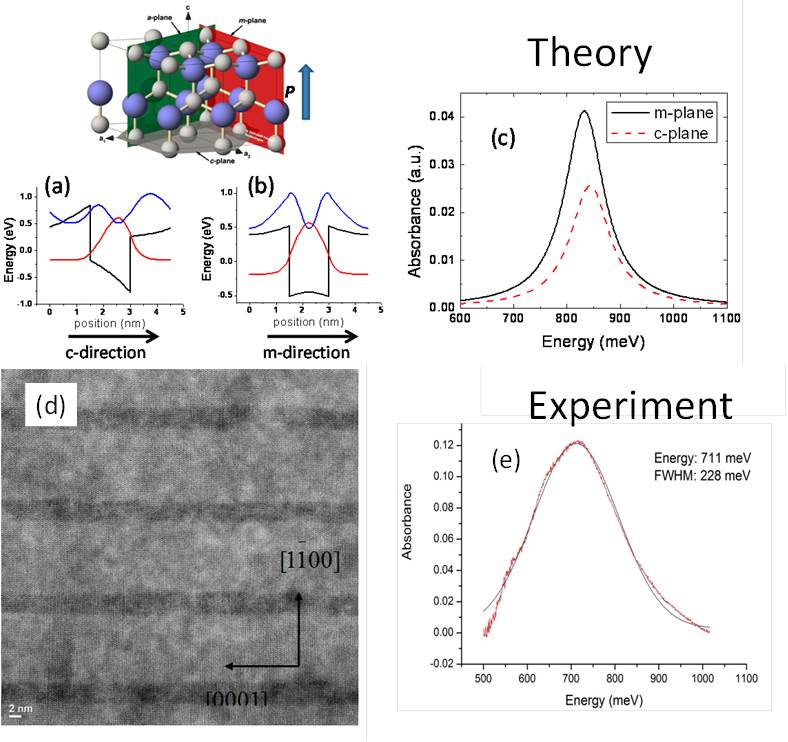Optical properties of nitride heterostructures

Our primary tool for investigating the infrared optical properties of materials is infrared spectroscopy. For example, we seek to elucidate the impact of nanostructure on optical transitions and electronic transport in III-nitride materials. An important and virtually unexplored path to reduce the influence of built-in polarization fields in nitride infrared optoelectronic devices is the use of heterostructures on non-polar orientations (such as the m-plane) of GaN. The figure shows a comparison between the band structure of two structurally identical GaN QWs with AlGaN barriers on c-plane GaN (polar orientation) and m-plane GaN (nonpolar orientation). For m-plane oriented GaN, the polarization vector lies in the plane perpendicular to the growth direction and thus there are no polarization discontinuities at heterojunctions. In addition to simplification of device modeling under flat band conditions, some immediate advantages of structures on nonpolar GaN include improved optical dipole matrix elements and implicitly absorption and increased confinement for high lying energy levels. We were recently able to observe for the first time near-infrared absorption in AlGaN/GaN superlattices grown on m-plane free-standing GaN substrates from Kyma Tech. These results are most promising for future nonpolar nitride devices.
